 |
 |
 |
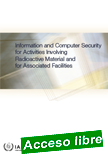 |
Information and Computer Security for Activities Involving Radioactive Material and for Associated Facilities
IAEA-TDL-013 ¦ English ¦ Date published: 2025
The integration of digital technologies, including computer based systems and networks, into facilities handling radioactive material involves the implementation of information and computer security measures to prevent unauthorized access, data breaches and attempts at sabotage. This publication addresses these crucial concerns by providing information on practical strategies for implementing information and computer security measures in the context of protecting radioactive material.
|
It underscores the significance of confidentiality, integrity and availability when protecting sensitive digital assets and outlines key nuclear security concepts, including vulnerability, threat, compromise and risk. The publication also emphasizes the importance of adopting a graded approach tailored to the specific needs of facilities and organizations handling radioactive material. By providing information on best practices and risk mitigation strategies, it aims at equipping interested parties with the necessary tools to fortify their digital defences and ensure the safety and security of radioactive material and associated facilities.
|
 |
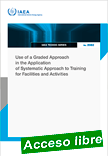 |
Use of a Graded Approach in the Application of Systematic Approach to Training for Facilities and Activities
IAEA-TECDOC-2082 ¦ English ¦ 56 pages ¦ Date published: 2025
This TECDOC offers practical guidance on implementing a graded approach to the Systematic Approach to Training (SAT) for personnel at nuclear facilities. A graded approach to SAT benefits nuclear facilities by raising the quality and effectiveness of training, which in turn makes a significant contribution to safety and performance.
|
This TECDOC is intended for managers and specialists associated with training and personnel in nuclear facilities and regulatory organizations, as a supplement to IAEA Nuclear Energy Series No. NG-T-2.8, Systematic Approach to Training for Nuclear Facility Personnel: Processes, Methodology and Practices.
|
 |
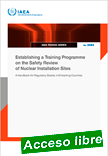 |
Establishing a Training Programme on the Safety Review of Nuclear Installation Sites
IAEA-TECDOC-2083 ¦ English ¦ 109 pages ¦ Date published: 2025
This TECDOC provides practical guidance to Member States interested in embarking on new nuclear programmes. It contains good practices from capacity-building training programmes implemented by the IAEA and several experienced Member States, and captures lessons learned from current practices and experiences.
|
As a handbook, it is intended to support managers and technical personnel within regulatory bodies and operating organizations in their preparation for developing their own capacity-building programmes for regulatory safety reviews.
|
 |
 |
Recovery of Uranium from Phosphate Ores
IAEA-TECDOC-2086 ¦ English ¦ 60 pages ¦ Date published: 2025
This publication examines the benefits and challenges of recovering uranium from phosphate ores as an alternative to conventional uranium mining. It considers the low cost of uranium extraction from phosphate ores, its potential profitability and discusses the relative speed of equipping fertilizer plants with uranium recovery units (two to three years), compared with conventional uranium mines, which can take ten years or longer to mature.
|
These issues are examined in detail, alongside supply security and environmental concerns. This TECDOC is intended for policy makers working on uranium supply security; mining and mineral processing experts working on unconventional uranium recovery and/or solvent extraction; and for researchers working on uranium concentrations in fertilizers and potential natural uranium accumulation in agricultural soils.
|
 |
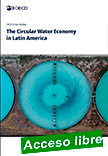 |
The Circular Water Economy in Latin America
OECD Publishing, Paris, 2025. 65 p.
The report investigates the state of the art, challenges and opportunities of the circular water economy in 10 Latin American countries, namely: Argentina, Brazil, Chile, Colombia, Costa Rica, Honduras, Mexico, Paraguay, Peru, and Uruguay. The circular approach to water management consists of reducing water use in production and consumption processes, enhancing water efficiency, promoting water re-use and recycling, and recovering energy and materials from wastewater treatment.
|
Guided by the OECD Principles on Water Governance, the report evaluates governance gaps and offers policy recommendations to establish regulatory frameworks, financing mechanisms, and capacity-building measures necessary to transition from a linear to a circular water economy.
|
 |
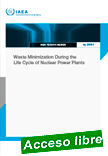 |
Waste Minimization During the Life Cycle of Nuclear Power Plants
IAEA-TECDOC-2091 ¦ English ¦ 110 pages ¦ Date published: 2025
Nuclear power plants (NPPs) are designed to ensure minimal waste arising during operation, and waste management processes further ensure that radioactive waste is managed safely and cost effectively. Although safety requirements for waste management need to be fulfilled unconditionally, the implementation of cost-efficient processes depends on the individual radioactive waste management (RWM) and spent fuel (SF) management policies adopted in a particular Member State.
|
This publication provides end-users with useful technical information regarding waste minimization at NPP operations and examines typical waste inventories and minimization methodologies. It additionally explores solutions for optimizing the minimization of waste and evaluating RWM practices.
|
 |
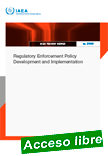 |
Regulatory Enforcement Policy Development and Implementation
IAEA-TECDOC-2089 ¦ English ¦ 104 pages ¦ Date published: 2025
Regulatory enforcement is a core regulatory function and an important aspect of the regulatory oversight of nuclear facilities and activities. IAEA Safety Standards Series Nos. GSR Part I (Rev. 1) and GSG-13 provide requirements and recommendations for establishing and implementing enforcement policy. However, the lessons identified from various IAEA expert missions, peer reviews and regulatory conferences have revealed inconsistencies in the understanding, development and implementation of effective enforcement policies by regulatory bodies, highlighting the need for specific guidance on regulatory enforcement.
|
The objective of this TECDOC is to assist regulatory bodies in developing and implementing an enforcement policy and process in line with the IAEA safety standards. It includes practical guidance from regulatory bodies with relevant experience and provides recommendations for enhancing enforcement actions in line with effectiveness, efficiency, and consistency. Additionally, it provides methods for evaluating the significance of non-compliances using a graded approach and applying the appropriate enforcement actions. This publication is intended for regulatory bodies, technical support organizations and competent authorities responsible for the oversight of nuclear facilities and activities.
|
 |
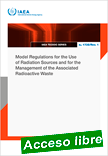 |
Model Regulations for the Use of Radiation Sources and for the Management of the Associated Radioactive Waste
IAEA-TECDOC-1732/Rev. 1 ¦ English ¦ 134 pages ¦ Date published: 2025
This publication is a revision of IAEA-TECDOC-1732, Model Regulations for the Use of Radiation Sources and for the Management of the Associated Radioactive Waste. It may be considered a supplement to IAEA Safety Standards Series No. GSG-13, Functions and Processes of the Regulatory Body for Safety, to provide information to States on the development of regulations for the safe use and control of radiation sources in medicine, industry, research, agriculture and education, and the management of the associated radioactive waste.
|
.
|
 |
 |
Uranium 2024: Resources, Production and Demand
A Joint Report by the Nuclear Energy Agency and the International Atomic Energy Agency
NEA No. 7683 ¦ English ¦ 608 pages ¦ Date published: 2025
Uranium is the primary raw material fuelling all nuclear fission reactors today. Countries around the world rely on it to generate low-carbon electricity, process heat and hydrogen as part of their strategies to reduce carbon emissions and increase energy security and supply. No form of nuclear fission power – of any kind – is possible without relying on uranium.
|
This 30th edition of Uranium Resources, Production and Demand, also commonly known as the “Red Book” marks the 60th anniversary of its establishment as a recognised global reference on uranium. Jointly prepared by the Nuclear Energy Agency (NEA) and the International Atomic Energy Agency (IAEA), it provides analyses and insights from 62 uranium-producing and consuming countries – some participating for the first time. The present edition reviews world uranium market fundamentals and presents data on global uranium exploration, resources, production and reactor-related requirements. It offers updated information on established uranium production centres and mine development plans, as well as projections of nuclear generating capacity and reactor-related requirements through 2050.
|
 |
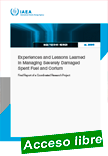 |
Experiences and Lessons Learned in Managing Severely Damaged Spent Fuel and Corium
IAEA-TECDOC-2085 ¦ English ¦ 314 pages ¦ Date published: 2025
Between 1979 and 2011, three severe nuclear power plant (NPP) accidents occurred at Three Mile Island (TMI, USA), Chornobyl (ChNPP, Ukraine), and Fukushima Daiichi (IF, Japan), resulting in melted reactor cores. Additionally, PAKs NPP Unit 2 (Hungary) experienced a loss of cooling accident in 2003 during the cleaning of irradiated fuel.
|
The accidents at TMI and PAKs have been remediated to the extent that the material is either in monitored safe storage or is packaged pending processing. ChNPP Unit 4, which was destroyed during the accident, was finally stabilized in 2016 with the installation of new safe containment. The decommissioning of IF NPP remains a major challenge as three of the first-generation reactor cores suffered meltdown. In 2015, the Coordinated Research Project on the management of severely damaged spent fuel and corium was established. This publication examines the efforts of participating Member States in the characterization, recovery, and management of fuel containing materials (fuel assemblies, fuel debris, corium and melted corium-concrete interaction products) to support future decommissioning and environmental remediation activities. It also provides an overview of the loss of cooling accidents and insights into the evolution of corium and fuel debris in storage conditions, which will support ongoing decision-making on the management of these materials.
|
 |
| |
|
|

|
|
|
| |
|
|
| |
| |
|
|
| |
| |
|
|
| |
| |
|
|
|
| |
| |
